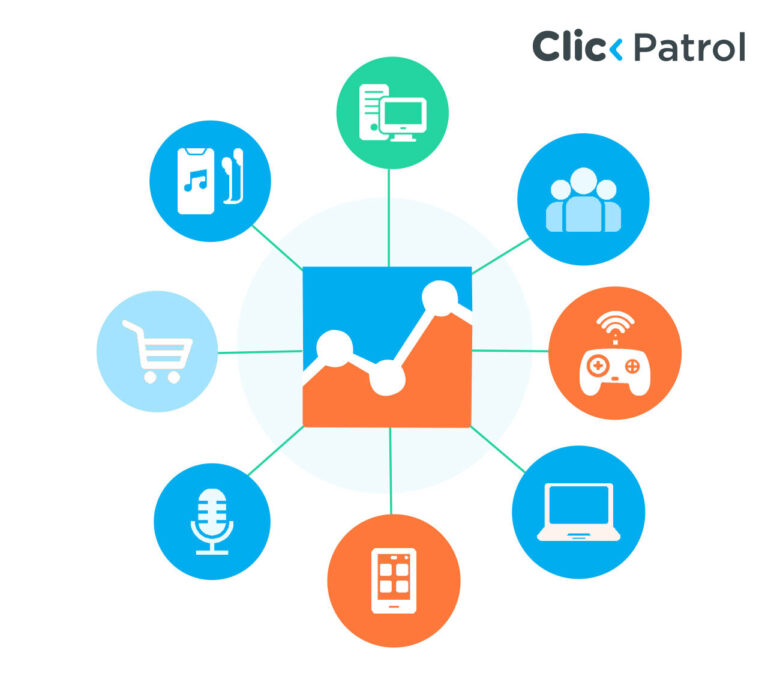
Latest in Ad Fraud Detection
Abisola Tanzako | Sep 18, 2024

Table of Contents
- Understanding ad fraud detection
- Why Ad fraud detection is necessary
- Latest Ad fraud detection techniques
- Machine learning and artificial intelligence (AI):
- Behavioral analysis:
- Real-time detection:
- Device fingerprinting and cross-device tracking:
- Industry collaboration:
- Challenges and limitations of the latest ad fraud detection
- The future trend in ad fraud detection
- 1. Predictive analytics
- 2. Adaptive algorithms
- 3. Collaboration and data sharing
- 4. Integration of blockchain technology
- 5. Enhanced user verification
- Latest on the detection of persistent threat of ad fraud
- FAQs
Ad fraud detection is still a significant problem in digital marketing. Advertisers invest a lot of money into online campaigns and risk losing at least 26% of their investment to ad fraud. Fraudsters keep developing clever ways to take advantage of these investments, making huge sums through different types of ad fraud. According to a recent study, ad fraud cost marketers $522 in advertising spending in 2021 alone, which is projected to rise to $836 billion by the year 2026.
Ad fraud detection cannot be overemphasized, as it has become vital in protecting ad budgets and guaranteeing that the money spent on the ad is going to the right customer. This article examines why ad fraud detection is necessary, the latest methods to detect it, and the challenges and limitations faced.
Understanding ad fraud detection
Ad fraud detection refers to the ability to recognize potentially fraudulent activities, manipulate online advertising metrics, and implement necessary preventive measures. Some activities include clicking the advertising links with the help of bots or any other invalid methods and getting fake impressions and conversions.
The primary purpose of ad fraud detection is to analyze clickthrough rates, conversions, IP addresses, user behavior, and sources of traffic in an attempt to identify all negative practices, including fraudulent practices that will only waste the advertising budget, and ensure the ads reach potential consumers rather than bots.
Why Ad fraud detection is necessary
The issue of ad fraud is grave and substantially impacts ad budgets and marketing efforts. It lowers the ROI, distorts statistics, and raises operating costs. Also, Ad fraud can cause a serious challenge to the credibility of digital advertising; this makes detecting and combating. Here are some reasons to better understand the necessity of ad detection:
- Protecting financial assets: Fraud detection assists organizations in reducing fraud cases, protecting large amounts of money that might be embezzled in the process.
- Maintaining customer trust: This is because fraud detection measures help ensure that customers’ relations with organizations are positive by showing customers that their relations with organizations are secure and free from potential financial loss.
- Legal compliance: To meet the legal standards and policies relevant to ad fraud to avoid legal consequences like penalties and fines.
- Preventing financial crime: By avoiding and detecting fraudulent transactions, businesses contribute to other anti-money laundering and terrorist financing efforts.
- Mitigating reputation risks: Fraud detection enables a firm to reduce the chances of a security breach or financial malpractice that would embarrass the company and potentially harm its brand.
Latest Ad fraud detection techniques
Over the years, advertisers have been utilizing various techniques to detect ad fraud. Some of these techniques have effectively detected ad fraud and subsequent prevention. However, malicious entities have taken advantage of the growing technological advancement to devise innovative ways to carry out ad fraud. The latest developments in identifying ad fraud include:
- Using complex computation tools.
- Faster and timely data processing.
- Understanding behavioral and pattern analysis.
Machine learning and artificial intelligence (AI):
Using AI and machine learning is one of the latest advancements in ad fraud detection. When identifying peculiar patterns in the massive data that the human eye would miss, these technologies are highly unique. This is the use of advanced algorithms to pattern and detect anomalies. These models are trained to detect and identify known fraud or identifying unknown fraud by analyzing the difference from the standard patterns.
Behavioral analysis:
This uses deep learning to identify suspicious behavioral patterns. Fraudsters use automated bots that mirror human activity; however, they may not perform activities like a human, for example, when a human clicks on an ad after viewing it.
Real-time detection:
Ad fraud is constantly advancing. While earlier it was an occasional manual click through fake links, fraudsters have evolved by leveraging real-time bidding (RTB) and programmatic advertising and employing numerous mass campaigns at high speed. Therefore, it is imperative to detect and respond to such frauds in real time to reduce the effect of ad fraud.
Device fingerprinting and cross-device tracking:
This technique identifies and tracks unique device characteristics, such as browser settings and hardware configurations, to identify and block fraudulent devices. By combining device fingerprinting with cross-device tracking, fraud detection systems can identify suspicious activities spanning multiple devices, like a bot network that uses various devices to create the imagination of legitimate traffic.
Industry collaboration:
Detecting ad fraud requires a collaborative effort by stakeholders. Some platforms promote collaboration among industry experts, publishers, advertisers, and ad tech companies. One such platform is Trustworthy Accountability Group (TAG).
It is a leading global certification program that fights fraudulent activities and increases trust in the advertising ecosystem. One of its missions is to eliminate fraudulent traffic and make the advertising space safe for all.
Challenges and limitations of the latest ad fraud detection
Some of the challenges and limitations of the latest ad fraud detection include:
- Evolving Fraud Tactics: Fraudsters never stop inventing ways to avoid detection; it is an endless game. Conventional and advanced detection technologies must continue to be enhanced to cope with this.
- False Positives: Sophisticated mechanisms used in detecting fraud can often lead to identifying standard and actual traffic as fraudulent. The main limitation of such techniques is the ability to balance the accuracy of results and sensitivity to differences.
- Resource-intensive: Establishing and maintaining functional detection systems is often expensive and requires a highly technical approach. Small advertisers may face challenges in sourcing the resources necessary to prevent fraud.
- Data Privacy Concerns: User data collection for fraud detection may also infringe on the rules and regulations governing the use of data and obtaining user consent. In other words, compliance with data protection laws and the efficient detection of fraud are strongly nuanced factors in an organization.
The future trend in ad fraud detection
The future trends in ad fraud detection include:
1. Predictive analytics
Predictive analytics is likely to receive a huge focus in the future of ad fraud detection. By analyzing historical data and determining patterns, predictive analytics can predict the possibility of fraud cases and thus prevent fraud situations from happening. Such an approach helps advertisers establish preventive measures to minimize fraud.
2. Adaptive algorithms
Since fraudsters keep changing their tactics, detection algorithms must also be dynamic. Future detection systems will incorporate smart algorithms that are malleable and capable of learning while in operation. Besides these, these algorithms will not only include recognized fraud patterns but will also be capable of recognizing emerging ones.
3. Collaboration and data sharing
This means all stakeholders will join in and fight ad fraud because they all stand to lose. Multiple companies can design better and stronger detection systems by providing timely data, obtaining possible observations, and analyzing the results of preexisting detection systems. This way, fraudsters cannot quickly attack supply chain partners and often work collectively to establish a specified standard of practice.
4. Integration of blockchain technology
By creating an open and unchangeable record of transactions, blockchain makes it possible to track ad impressions and clickthroughs accurately.
5. Enhanced user verification
Future ad fraud detection will also help enhance the user verification steps where necessary. Advertisers can increase efficiency by verifying users’ identities to minimize invalid activities.
Latest on the detection of persistent threat of ad fraud
Fraud detection is vital in digital marketing; it guarantees the optimal use of the advertising budget as well as the impact of the campaigns on the targeted audiences. Despite sophisticated approaches like AI and timely monitoring, problems of the dynamic nature of fraud schemes and data protection issues will continuously arise.
However, the best strategy for combating ad fraud is sustaining innovation and attention to it. Advertising must follow industry trends and implement modern technologies and advancements to guarantee the authenticity of its ads.
FAQs
Q. 1 What are the likely implications that will arise in the case of inefficient fraud prevention?
When fraud cannot be effectively prevented, it can lead to legal consequences, fines, and penalties being imposed. A company’s reputation will likely deteriorate, and customers will likely lose faith in it. Also, it can cause a higher risk of exposure to other forms of fraud and higher operational costs solely for fraud management and prevention.
Q. 2 What can the advertisers do to counter the ad fraud?
Advertisers should keep updating their detection programs, be aware of new fraud techniques, and always consider users’ ability to control their data to avoid being caught off guard.
Q. 3 What is the fraud detection process?
This process involves capturing user and transaction data, applying risk rules, and automatically approving or declining the action. For instance, an IP address, such as the country of origin or VPN address, can be assessed in terms of risk.
Q. 4 What kind of information is required in the fraud investigation process?
The data to be captured for fraud detection are user data, payment data, and behavior data of the users; this includes device, IP address, card BIN, shipping address, login attempts, password reset, and so on.





